The Need for Speed and Efficiency in Pharmaceutical Labeling
Pharmaceutical innovators understand the value of being the first to market with novel medicines. First movers often make important contributions to human health and achieve superior financial returns for distribution to shareholders and reinvestment in product development than fast followers. The most competitive and innovative pharmaceutical companies focus relentlessly on speed and efficiency with high quality.
The development of a new drug can take 10 to 15 years as it follows a rigorous process of discovery, pre-clinical testing, three phases of clinical testing, health authority approval, manufacturing scale-up, and market readiness, and often post-market clinical testing. At the same time, pharmaceutical companies receive patent protection from governments for a limited amount of time which varies globally.
The announcement by CEO Albert Bourla of Pfizer’s plan for 19 drug launches and/or label expansions over the next year and a half highlights this focus on speed to drug approval globally to deliver innovative therapies to patients and also maximize patent protection.
The Rigorous Process of Drug Development and Global Labeling
Like the overall drug development lifecycle, global product labeling follows a rigorous process that includes the development and approval of company core data sheets, local labels, artwork, and label distribution. This process is repeated for labeling changes which can be especially frequent in the early years of marketing as the patient base broadens and new information is continually flowing in.
It’s typical for global pharmaceutical companies to take more than twelve months for label changes to be generated, approved, and distributed.
Combining available structured authoring and component management systems with innovative, industry specific artificial intelligence and machine learning tools can help reduce the time it currently takes pharmaceutical companies to develop and revise product labels, reducing global rollout by up 50%.
LABEL GENERATION & CHANGE CONSIDERATIONS
- Am I maximizing the value of my structured and unstructured data?
- Can I simultaneously author multiple labels from one core data sheet
- Do my systems have the ability to intelligently automate the conversion of language from my core data sheet to the regulatory approved language for that specific geography?
- Is it possible for my system(s) to manage translations?
- How many man-hours are being spent harmonizing tables, lists, and graphs during the authoring process?
Overcoming Data Inactivity and Accessibility Challenges
As much as 80% of data stored in production databases is inactive. Even worse, when you need to find something in those systems, fewer and fewer people know how to navigate the systems in order to access the data.
At the same time, data growth is rapidly increasing and causing challenges for organizations to meet new regulatory demands. Glemser’s natural language processing (NLP) capabilities overlay, ingest, and structured and unstructured content from a company’s regulatory information management systems and other data repositories. This allows you to maintain your current systems while gaining knowledge out of your data with a simple and cost-effective solution.
Glemser’s natural language generation (NLG) capabilities generate intelligent sentences from this newly structured data and organize them into controlled, compliant components at machine speed and massive scale. Think ChatGPT but designed and built for Life Sciences to meet the rigid control and compliance standards. This application of machine learning delivers more value for data faster while significantly reduces the time traditionally required for authoring product labels as structured content.
Streamlining Global Labeling Processes with Component-Based Authoring
This proven approach has helped pharmaceutical companies reduce label authoring time while increasing regulatory compliance.
For example, generating a United States Prescribing Information label for the Food and Drug Administration in the US and a Summary of Product Characteristics label for the European Medicines Agency in the EU utilizing a company core data sheet as the source is easily done utilizing component-based authoring. The continuous publishing engine paired with the AI and ML capabilities will recognize the source data at the core data sheet and the desired label output geography.
These tools work in concert to transform core data sheet sections to the appropriate formatting and sentences to present to the human in the loop for review. This standard workflow for the development, approval, and revision of global labeling with reusable graphics and artwork that include compliant electronic signatures and audit trails significantly reduces the label authoring timeline.
Conclusion
Glemser, a leader in compliance and regulatory systems provides a comprehensive solution for managing labeling components as well as global and locally assembled labeling documents incorporating component-based authoring, artificial intelligence, machine learning etc. ComplianceAuthor AI can be implemented out of the box in 6 months utilizing Glemser’s technology solution combined with deployment support consisting of many years of labeling process experience for optimal configuration for an individual company’s needs.
KEY TAKEAWAYS
- Quickly maximize the value of your unstructured and structured data using natural language processing
- Author labels simultaneously via omnichannel publishing with pre-configured global labeling outputs (SPL, QRD, HL7, etc.)
- Reduce global labeling author time using natural language generation (translations, sentence generation, etc.)
- Increase time to value during an implementation via AI and ML tools


